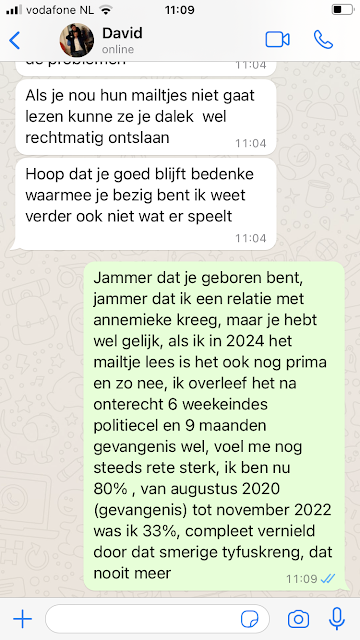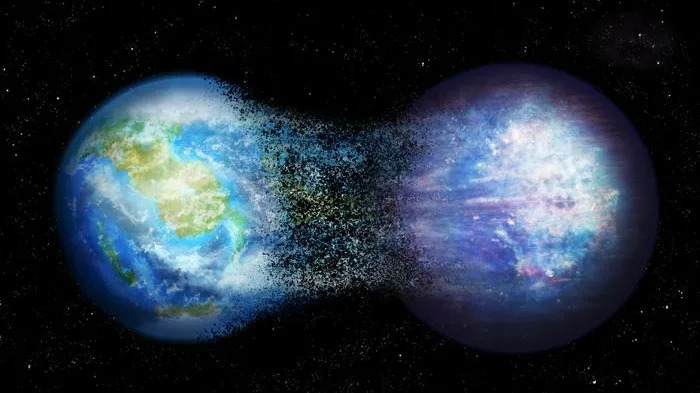😱😱😱😱😱😱🙀🙀🙀🙀🙀🙀
start the fire, maar inwendig, niet de aarde, die verbranden we sinds 1800, het is zo gevaarlijk en ernstig en alle varkentjes, eendjes, ratjes en kippetjes bleife op hun bureaustoeltje papier verschuiven en vergaderen en klampen zich vast aan sielige slachtoffer hebberige bezitterige bange laffe valse kutte regeltjes
https://www.youtube.com/watch?v=Ew4MHinsV-I&list=RDMM&index=6
https://www.yahoo.com/news/runaway-greenhouse-gas-effect-destroy-210001834.html
In the year 2525, when men is no longer there, when life is no longer on planet earth
Een knappe dame van 24 jaar in de tram : "maar dat is diep, dat is diep", met van die wanhopige mogelijk mooie (zaadvragende~zaadweigerende) ogen erbij . WE GOT HERE . WE GOT HER ?
Goh, die 15 mooie chirurgische staal gevoelsringen zijn vooral diepblauw en een beetje groen en grijsbruin (blauw is gelukkig en tevreden, groen is mixed emotions, bruingrijs is angst) zie je hoe sterk ik aan het worden ben in stress omstandigheden, maar nog bijlange na geen Iryna Ukraine of Margalith
God Verdomme, die jongens en mannen aan het front in Oekraïne en Rusland en dan die verwaande verrotte doodse kakelende knorrende kutten varkens en kippen in hol land mee maken, lezen, horen aanvoelen 🤮🤮
when methane comes free from ice free soil, it means plus 8 degrees, als het ijs op groenland en de toendra's gesmolten is, dan komt methaan vrij per 2036 met een extra stijging van 8 graden en dan gaat het heel snel, CO2 en het veel sterkere broeikasgas methaan (1 koe produceert daarvan (methaan) even veel via mest en scheten als een benzine middenklasse auto CO2) versterken elkaar qua broeikas effect
2057 is het voorbij
How the runaway greenhouse gas effect can destroy a planet's habitability — including Earth's
Using advanced computer simulations, scientists have shown how easily a runaway greenhouse effect can rapidly transform a habitable planet into a hellish world inhospitable to life.
Not only does this research have implications for our understanding of extrasolar planets, or "exoplanets," but it also offers insight into the human-driven climate crisis on Earth.
The team of astronomers from the University of Geneva (UNIGE) and CNRS laboratories of Paris and Bordeaux saw that after initial stages of a planet's climate transformation, the planet's atmosphere, structure and cloud coverage get significantly altered, such that a difficult-to-halt runaway effect starts to commence. Alarmingly, this process could be initiated here on Earth with just a slight change in solar luminosity or by a global average temperature rise of just a few tens of degrees. Even those minor changes could lead to our planet becoming totally inhospitable.
Thus, the research offers a stark climate change warning.
"Until now, other key studies in climatology have focused solely on either the temperate state before the runaway or either the inhabitable state post-runaway," Martin Turbet, CNRS scientist and team member, said in a statement. "It is the first time a team has studied the transition itself with a 3D global climate model, and has checked how the climate and the atmosphere evolve during that process."
Related: Tiny 14-inch satellite studies ‘hot Jupiter’ exoplanets evaporating into space
A critical greenhouse effect
The runaway greenhouse effect in the team's simulation can see a planet change from having a temperate, Earth-like hospitable state to one that exhibits a hellscape with surface temperatures of around 1,800 degrees Fahrenheit (1,000 degrees Celsius). That is hot enough to melt lead. These are temperatures even higher than those at the surface of Earth's famously hellish neighbor, Venus.
The cause of this runaway greenhouse effect is something very familiar: Water vapor — a major greenhouse gas. Though water vapor may not be the first greenhouse gas we think of when it comes to climate change on Earth, like more familiar greenhouse gases such as carbon dioxide and methane, water vapor stops solar radiation absorbed by a planet's surface from escaping back to space. This traps heat around the world like a thermal blanket. Scientists call it the greenhouse effect.
In small doses, the greenhouse effect is useful; for instance, it stops Earth from exhibiting a temperature below the freezing point of water. But too much greenhouse-induced warming can force oceans to evaporate, putting much water vapor in the atmosphere. As you might imagine, that can cause even more greenhouse warming. It's like a feedback loop. Aha, the "runaway" greenhouse gas effect.
Venus actually provides a stark example of what can happen when a runaway greenhouse effect is kickstarted.
"There is a critical threshold for this amount of water vapor, beyond which the planet cannot cool down anymore," research leader and former University of Geneva Department of Astronomy scientist Guillaume Chaverot said. From there, everything gets carried away until the oceans end up getting fully evaporated and the temperature reaches several hundred degrees."
Warning clouds
One of the most important and surprising aspects coming out of the team's simulation was the development of an odd cloud pattern. This pattern didn’t just increase the runaway greenhouse effect but also made it irreversible.
"From the start of the transition, we can observe some very dense clouds developing in the high atmosphere," Chaverot said. "Actually, the latter does not display anymore the temperature inversion characteristic of the Earth's atmosphere and separates its two main layers: The troposphere and the stratosphere. The structure of the atmosphere is deeply altered."
As for what this means for us, with the results of the simulation in hand, the team calculated that it would take only a small increase in solar radiation and a rise in Earth's temperature of tens of degrees to trigger an apocalyptic runaway effect. If that happened, Earth would eventually become as hostile to life as its neighbor Venus presently is.
when methane comes free from ice free soil, it means plus 8 degrees, als het ijs op groenland en de toendra's gesmolten is, dan komt methaan vrij per 2036 met een extra stijging van 8 graden en dan gaat het heel snel, 2057 is het voorbij
The news comes as countries attempt to limit human-driven greenhouse gases to cap Earth's overall warming to a quantity of 1.5 degrees Celsius by 2050, showing how vital this effort really is.
The team isn't yet sure of the effect the release of greenhouse gases alone could have on the runaway process and whether that process can really just go "away" at the same temperatures. They also are yet to find whether an increase in solar luminosity could continue to drive the process.
"Assuming this runaway process would be started on Earth, an evaporation of only 10 meters of the oceans' surface would lead to a 1 bar increase of the atmospheric pressure at ground level," Chaverot said. "In just a few hundred years, we would reach a ground temperature of over 500 degrees Celsius. Later, we would even reach 273 bars of surface pressure and over 1,500 degrees Celsius, when all of the oceans would end up totally evaporated."
Related Stories:
— These scientists want to put a massive 'sunshade' in orbit to help fight climate change
— This ISS mission could 'open some eyes' about climate science
— NASA's new 'Greenhouse Gas Center' tracks humanity's contribution to climate change
The research is also deeply important as humanity becomes increasingly adept at spotting and studying planets around other stars, a scientific discipline that will eventually lead to us hunting for life outside the solar system.
"By studying the climate on other planets, one of our strongest motivations is to determine their potential to host life," team member and director of the University of Geneva Life in the Universe Center (LUC) Émeline Bolmont said. "After the previous studies, we suspected already the existence of a water vapor threshold, but the appearance of this cloud pattern is a real surprise!"
The team’s research was published on Dec. 18 the journal Astronomy & Astrophysics.
😱😱😱😱😱😱😱😱🙀🙀🙀🙀🙀🙀🙀🙀
Scientists Simulated Runaway Greenhouse Effect and It's Horrifying
GREENHOUSE OF USHER
For the first time, a team of researchers has simulated what would happen if trapped greenhouse gases in the Earth's atmosphere trigger a snowball effect, causing a dramatic rise in the planet's temperature.
And the results are ugly: "an almost-unstoppable and very complicated to reverse runaway greenhouse effect," according to a statement, which would quickly make our home "as inhospitable as Venus," with temperatures shooting up by hundreds of degrees Fahrenheit in a matter of a few hundred years.
Hell Hole
As detailed in a new paper published in the journal Astronomy & Astrophysics, the team from the University of Geneva (UNIGE) and the French National Centre for Scientific Research (CNRS) studied what would happen if the greenhouse effect were trapped inside the Earth's atmosphere as if under an emergency thermal blanket.
If the effect were to rise too much, the amount of water vapor from evaporating oceans could be lethal.
"There is a critical threshold for this amount of water vapor, beyond which the planet cannot cool down anymore," said main author and UNIGE postdoctoral researcher Guillaume Chaverot in the statement. "From there, everything gets carried away until the oceans end up getting fully evaporated and the temperature reaches several hundred degrees."
The researchers took the concept of a runaway greenhouse effect to its natural — and hellish — conclusion.
"It is the first time a team has studied the transition itself with a 3D global climate model, and has checked how the climate and the atmosphere evolve during that process," said coauthor and CNRS researcher Martin Turbet.
According to Chaverot, the "structure of the atmosphere is deeply altered," with "very dense clouds developing in the high atmosphere."
Besides painting an alarming picture of our planet's future, the researchers say their study could also shed light on how to hunt for alien life in exoplanetary systems. For instance, their observed "fingerprint" of cloud patterns could be detectable in observations of exoplanets with atmospheres.
As far as the Earth is concerned, however, the situation looks dire. If 33 feet of the ocean's surface would evaporate, the researchers calculate that the atmospheric pressure would increase by 1 bar at ground level.
"In just a few (hundred ..... when methane comes free from ice free soil, it means plus 8 degrees, als het ijs op groenland en de toendra's gesmolten is, dan komt methaan vrij per 2036 met een extra stijging van 8 graden en dan gaat het heel snel, 2057 is het voorbij) years, we would reach a ground temperature of over [932 degrees Fahrenheit]," Chaverot explained in the statement. "Later, we would even reach 273 bars of surface pressure and over [2732 degrees Fahrenheit], when all of the oceans would end up totally evaporated."
😱😱😱😱😱😱😱😱🙀🙀🙀🙀🙀🙀🙀🙀
SPEND THOSE BILLIONS ON WIND TURBINES ON TRANSPORT IN ORDER TO STOP BURNING OIL, GAS, COAL, WOOD, GARBAGE, TRASH, CORPSES, (WO)MEN ARE BURNING THIS BEAUTIFUL PLANET AND WEAKEN A FRAGILE SOIL BY PUMPING OIL AND GAS OUT OF IT:
THEY ARE COMPLETELY CRAZY
STOP (BURNING) OIL, GAS AND COAL NOW,
WAKE UP, IT'S MUCH TOO LATE
More on global warming: Billions in Funding Pouring Into Facilities for Sucking Carbon From Atmosphere














Geen opmerkingen:
Een reactie posten